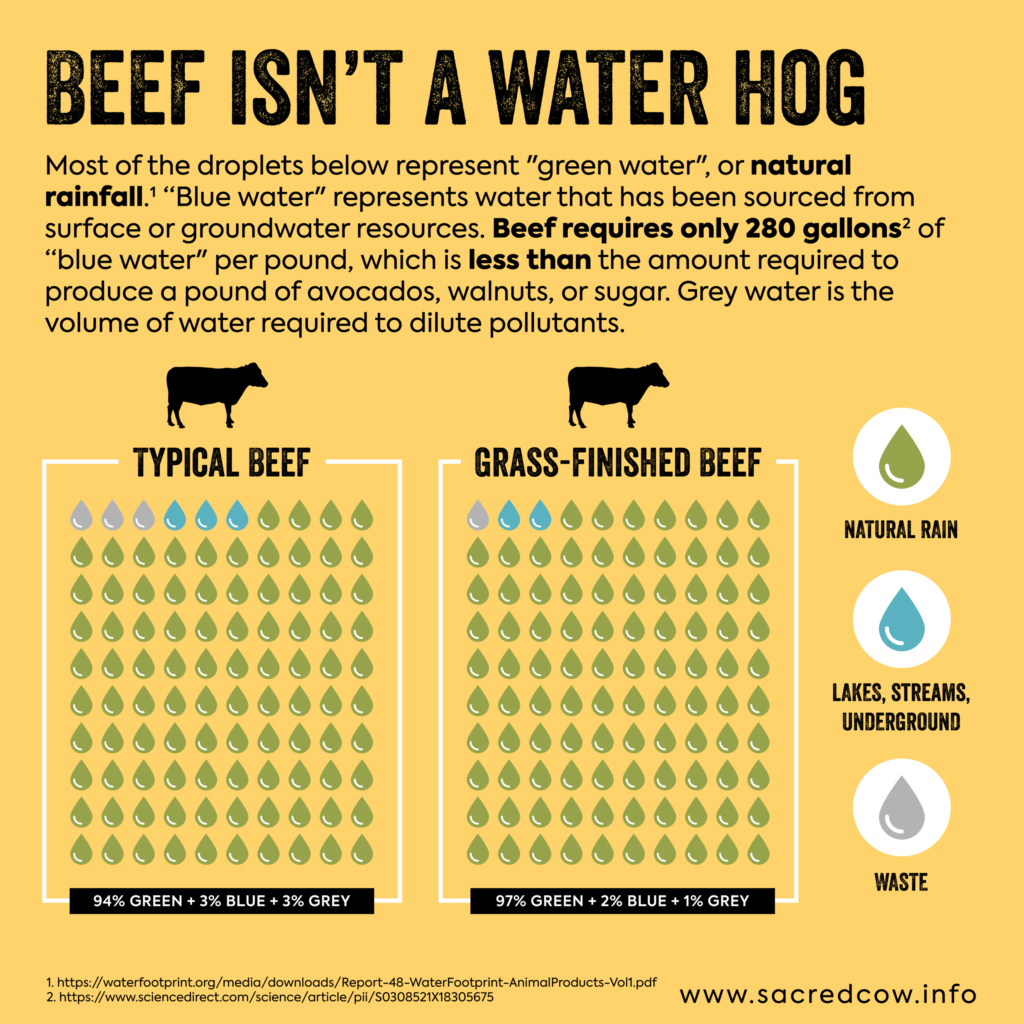Advocates of lab-grown meat, or synthetic alternative protein (SAP), claim that it will be better for the environment than raising cattle. They predict that cultured meat, as SAP is also known, will require less land and water than cows. They also claim that SAP production will help reduce pollution and greenhouse gases (GHG), which are blamed for causing global warming. According to the Good Food Institute, SAP “may cause 92% less global warming and 93% less air pollution while using 95% less land and 78% less water”.
Disputed (and Missing) Data
Researchers at the University of California, Davis seem to disagree with these assessments. In an April 2023 article, four researchers examined the environmental impacts of cultured meat in a cradle-to-grave life assessment. They found that SAP’s impact is likely to be “orders of magnitude higher than median beef production if a highly refined growth medium is utilized”. This research is especially important because the SAP industry is not required to, and has not shared, as much GHG emissions data as traditional agriculture.
Renewables Come with Tradeoffs
Even if the entire SAP industry switched to renewable energy sources today, any environmental benefits could be offset by what Environmental Science & Technology describes as “a new phase of industrialization with inherently complex and challenging tradeoffs.” For example, the construction of large wind or solar farms requires extensive land use that displaces wildlife. “Large-scale wind and solar farms require at least 10 times as much land per unit as coal- and natural gas-fired power plants”, the Washington Post reports. Solar panels also contain heavy metals, which are mined and require proper disposal.
Comparing Water Usage
Beef is blamed for being the food with the largest global water footprint, but SAP production is also water-intensive. “Cultivated meat production will likely use the same amount of water as conventional meat,” the website What is Cultivated Meat? explains. Yet this interdisciplinary knowledge base also predicts that “cultivated meat will likely have a smaller nutrient pollution than conventional meat” because there won’t be agricultural runoffs that contain nutrient-rich manure and chemical fertilizers.
Comparing Waste Disposal
Soils can absorb agricultural runoffs in amounts that are not excessive. With SAP production, however, proper disposal is required. Given that the industry uses practices from tissue engineering, do the principles of biomedical waste management apply? “Most biomedical waste substances do not degrade in the environment, and may not be thoroughly removed through treatment processes,” the authors of an article published by the National Institutes of Health (NIH) explain. “Therefore, the long-lasting persistence of biomedical waste can effectively have adverse impact on wildlife and human beings, as well”.
Think Critically and Look Ahead
Go Natural Education encourages you to think critically about overly simplistic claims that SAP, like meat production, is either “good” or “bad” for the environment. It’s also worth remembering that things can and will change. Renewables may replace fossil fuels, but farmers can also improve their manure management practices. Someday, too, the SAP industry may be required to share more data about its environmental impacts.
In our next article, we’ll examine SAP’s energy usage based on available information.

